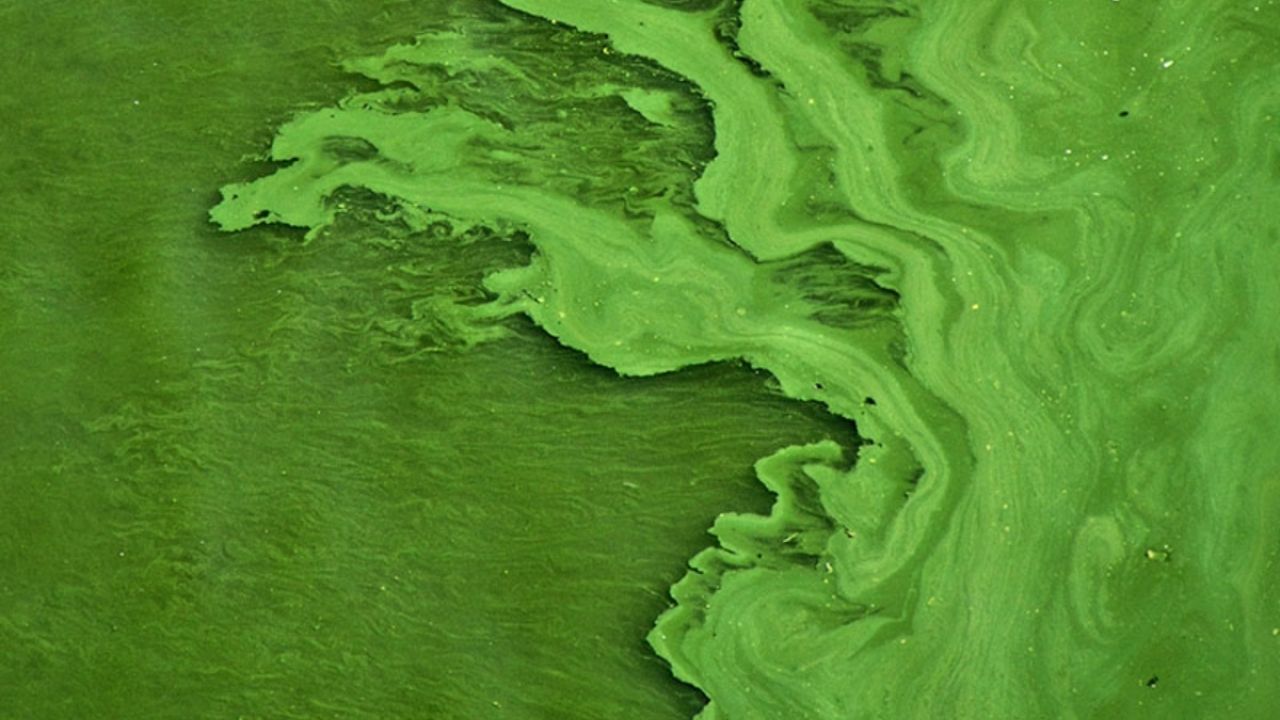
Extreme heat expected in many parts of the U.S. this Fourth of July weekend will likely bring millions of people to the beach, but an EWG analysis shows that recreation is not safe in or near all bodies of water because of their high levels of toxic algae.
So far this year, EWG has found 134 lakes, rivers, ponds and canals in 25 states that have experienced an outbreak of blue-green algae, driven by polluted farm runoff and exacerbated by the climate crisis – considerably more blooms than at this time in previous years.
Blue-green algae, which are tiny organisms called cyanobacteria, can produce dangerous toxins that cause many short-term health issues, such as vomiting, diarrhea and sore throat, and serious longer-term problems like liver failure and cancer. People are commonly exposed to toxins through swimming or playing in polluted water, but newer research also shows toxins can be airborne, so people can be exposed just by sitting on a beach or walking near the water.
And algae toxins don’t just hurt people, they also sicken and even kill animals, especially dogs. Although not all cyanobacteria blooms produce toxins, those that do can be very dangerous.
Algae outbreaks are triggered by nitrogen and phosphorus that pollute bodies of water. Heat and sunlight make the problem worse, and as bodies of water heat up throughout the summer, algae blooms occur more frequently and grow larger. Although nutrient pollution can come from different sources, a main cause of algae outbreaks is agriculture – fertilizer and animal manure run off farm fields and enter bodies of water. And the climate crisis is exacerbating the problem through heavier rain and higher temperatures.
Every summer, EWG provides an interactive map tracking news reports of algae blooms, either toxic or not toxic. Through June 27 this year, we’ve seen a 46 percent increase in reports of blooms compared to the same period last year. There were fewer reports last year compared to previous years because of increased coverage of the pandemic. But there have also been more reports compared to 2019 – 134 reports of the outbreaks in 2021, compared to 111 reports at the same time in 2019.
Half of all states have already seen an outbreak, with Florida, California and Massachusetts accounting for nearly half of the news reports. With algae blooms polluting 34 bodies of water in Florida this year, it has been by far the worst state for outbreaks
If you’re planning a trip to a lake or other body of water this weekend – or any time this summer – keep an eye out for blooms. Check with your local health department or our news report map to see if an outbreak is happening where you are going.
It’s also important to know that news reports and health departments don’t capture most blooms, so before you get near the water, look for algae that is bluish-green or resembles pea soup and notice whether there’s a musty smell. If you see either type of algae or detect the smell, stay out of the water and notify your local health department of a potential blue-green algae bloom.


